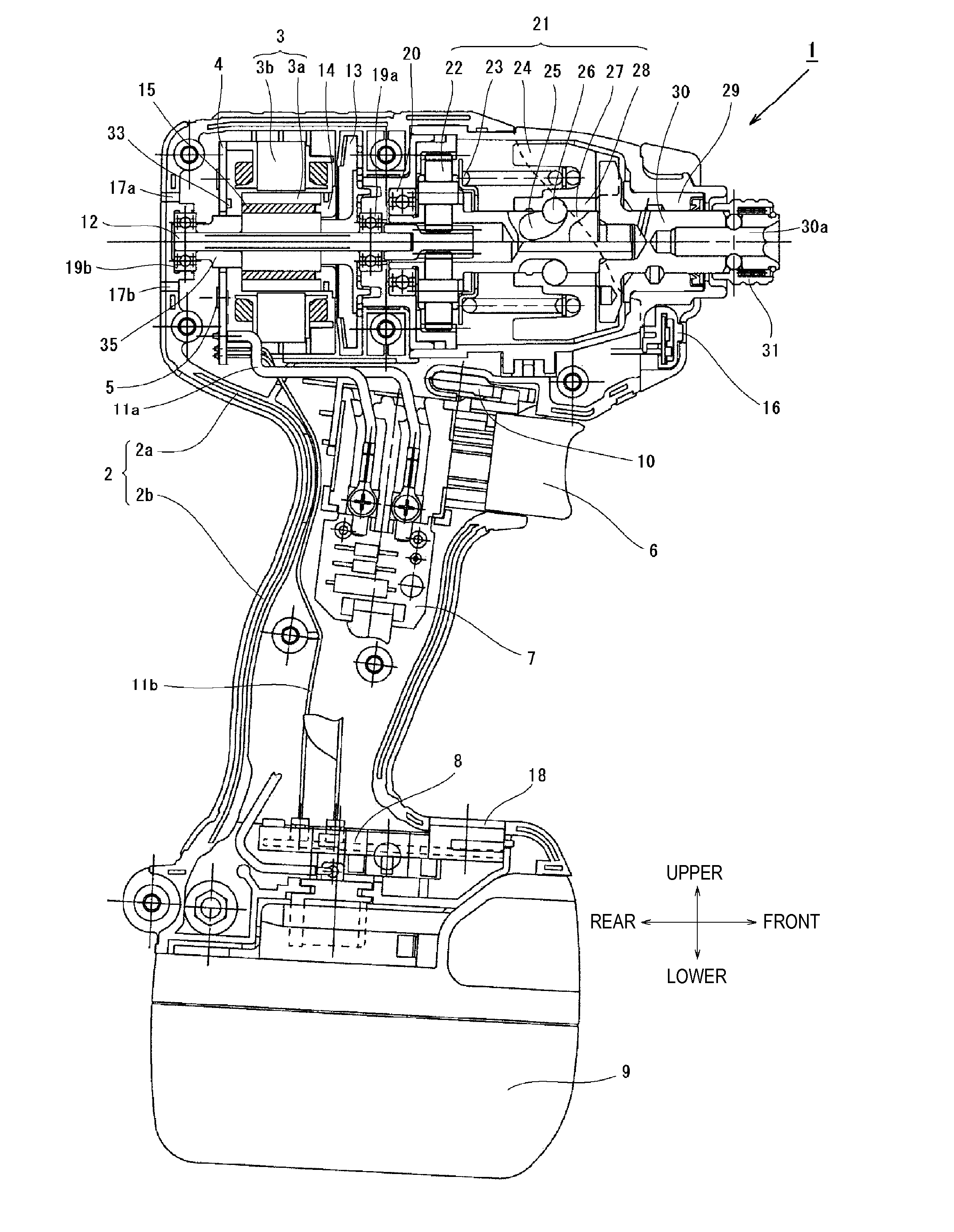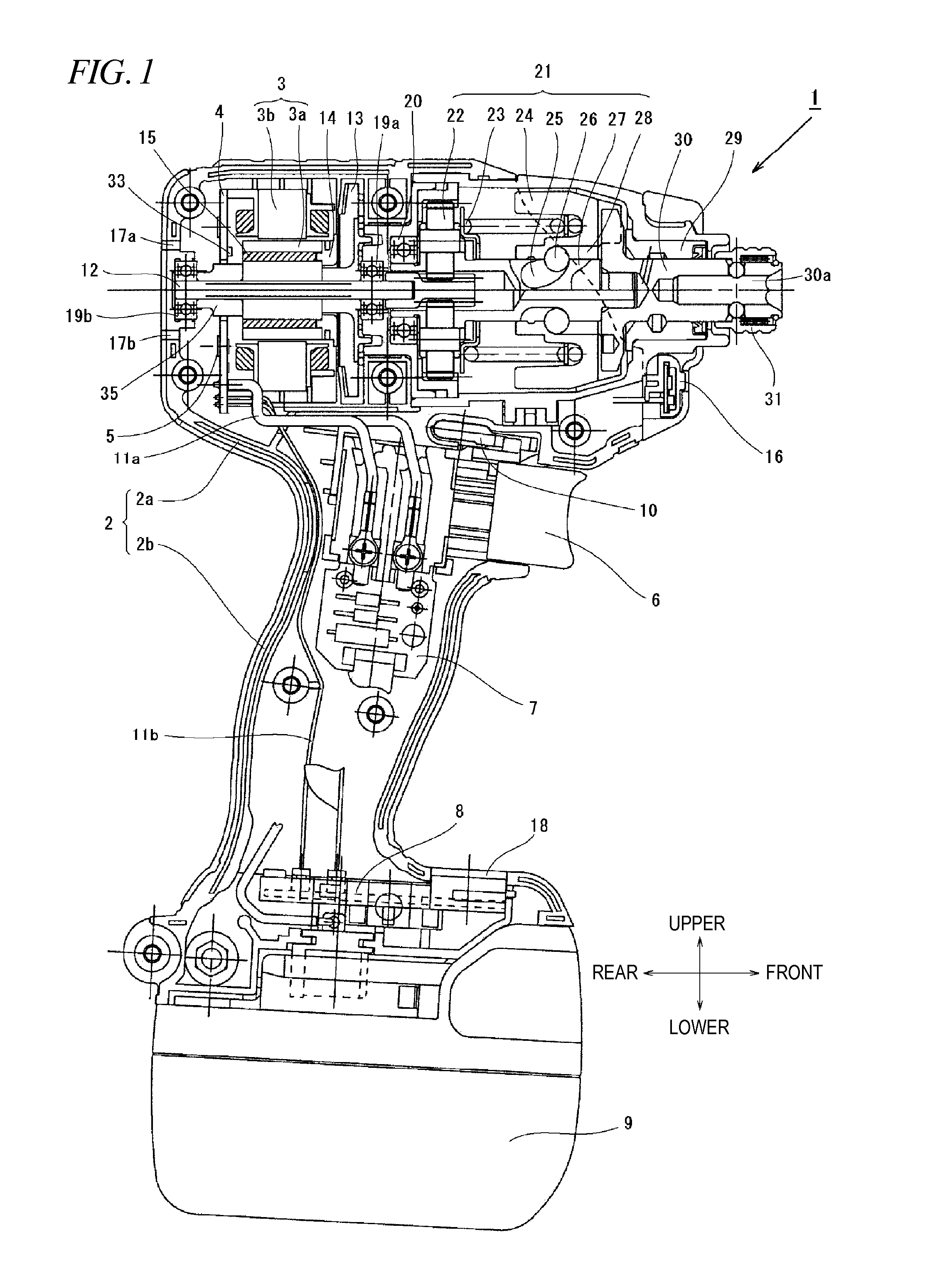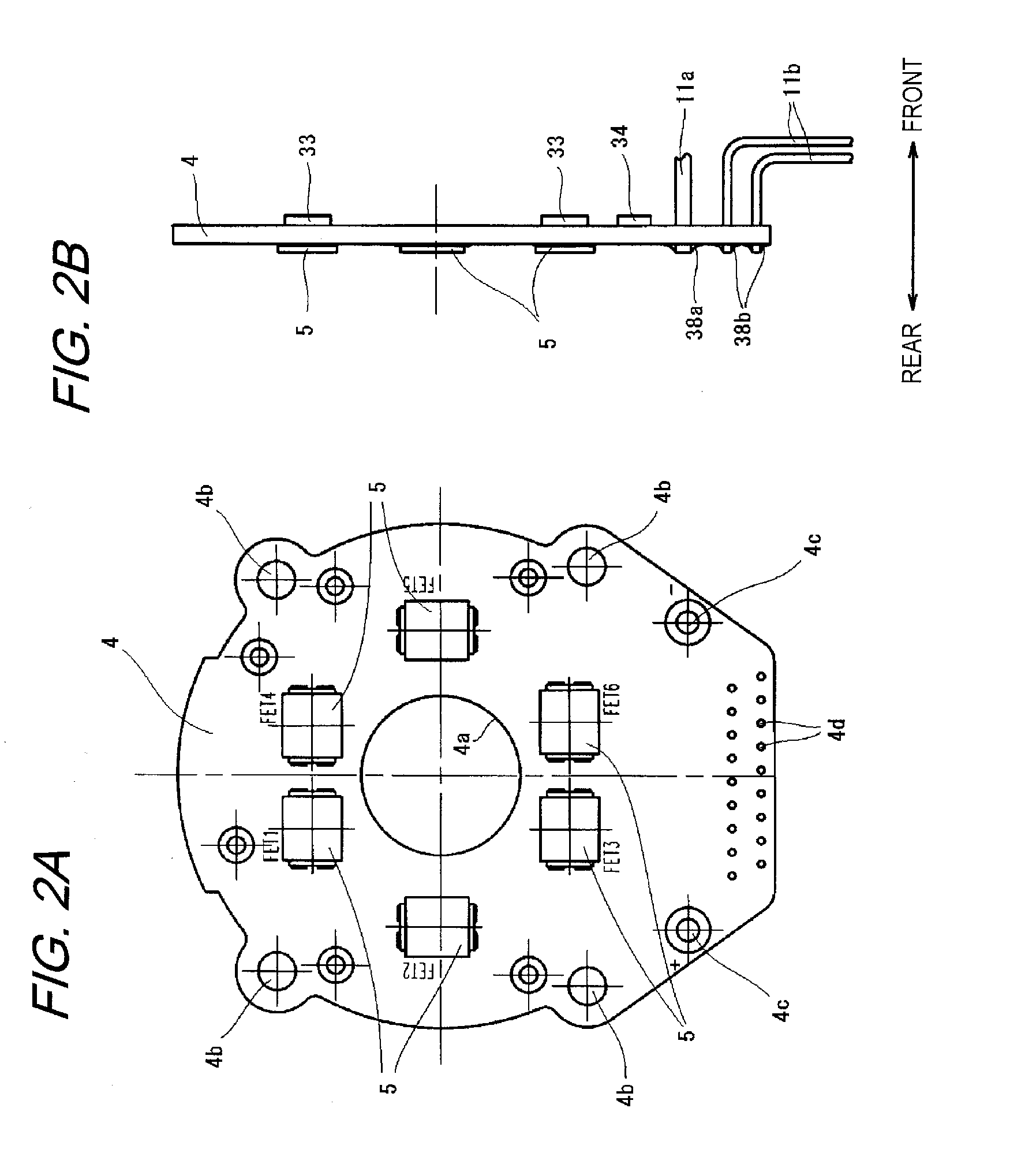Electric tool
- Summary
- Abstract
- Description
- Claims
- Application Information
AI Technical Summary
Benefits of technology
Problems solved by technology
Method used
Image
Examples
embodiment 1
[0069]Hereinafter, exemplary embodiments of the present invention will be described with reference to the accompanying drawings. Further, as used herein, a front-rear direction and an upper-lower direction are referred to the directions indicated by arrows of FIG. 1.
[0070]FIG. 1 is a view showing an internal structure of an impact driver 1 as an example of an electric tool according to the exemplary embodiments. The impact driver 1 is powered by a rechargeable battery 9 and uses a motor 3 as a driving source to drive a rotary striking mechanism 21. The impact driver 1 applies a rotating force and a striking force to an anvil 30 which is an output shaft. The electric tool 1 intermittently transmits a rotational striking force to a tip tool (not shown) such as a driver bit to fasten a screw or a bolt. Here, the tip tool is held on an mounting hole 30a of a sleeve 31.
[0071]The brushless DC type motor 3 is accommodated in a cylindrical main body 2a of a housing 2 which is substantially ...
second embodiment
[0094]Next, a second embodiment of the present invention will be described with reference to FIGS. 6 and 7. In the first embodiment, the duty ratio of the PWM control which performs the speed control of the motor is calculated by the calculation, based on the battery voltage or the motor temperature immediately before the trigger is pulled. In the second embodiment, calculation results of the first embodiment are grouped to some extent and stored in ROM (not shown) which is included in the operation part 40, or the like. In this way, the setting process of the duty ratio is shortened. FIG. 6 is a matrix table showing a relationship among the battery voltage, the motor temperature and the duty ratio. Here, the battery voltage is divided into six steps and the motor temperature is divided into three steps. And, optimal duty ratios are stored on the basis of combination of the battery voltages and motor temperatures. Here, it is preferable that the stored duty ratios are optimal values...
PUM
 Login to View More
Login to View More Abstract
Description
Claims
Application Information
 Login to View More
Login to View More - R&D
- Intellectual Property
- Life Sciences
- Materials
- Tech Scout
- Unparalleled Data Quality
- Higher Quality Content
- 60% Fewer Hallucinations
Browse by: Latest US Patents, China's latest patents, Technical Efficacy Thesaurus, Application Domain, Technology Topic, Popular Technical Reports.
© 2025 PatSnap. All rights reserved.Legal|Privacy policy|Modern Slavery Act Transparency Statement|Sitemap|About US| Contact US: help@patsnap.com



